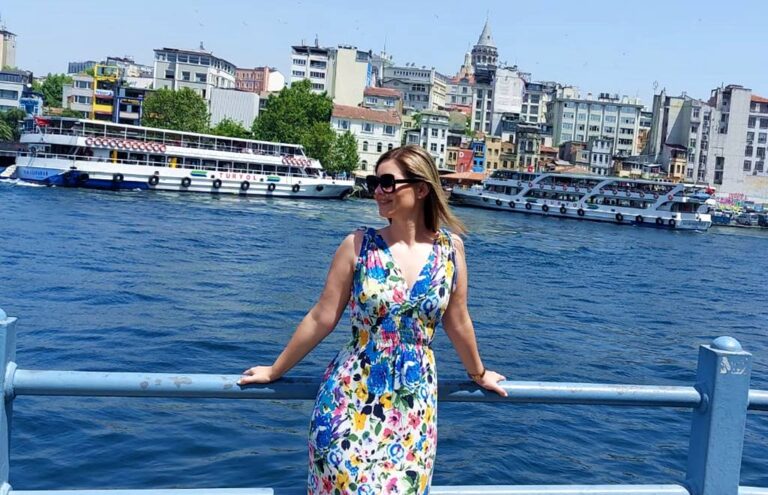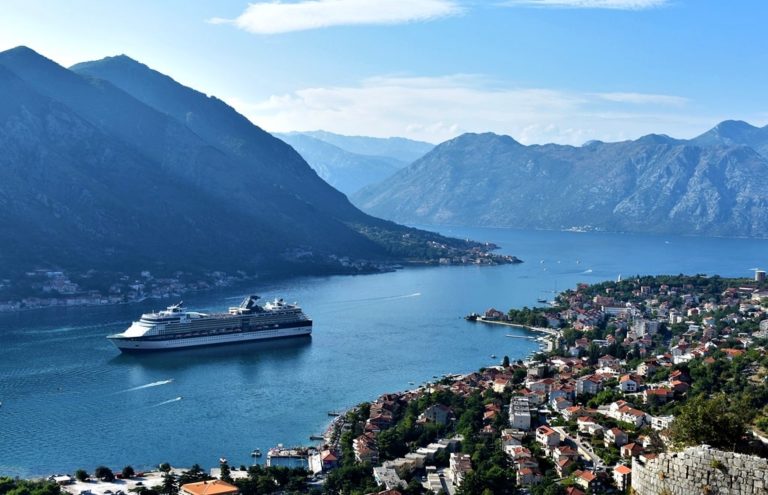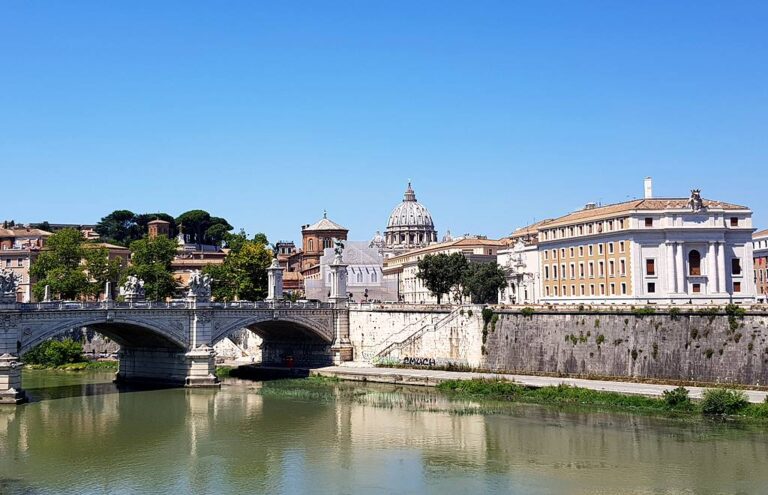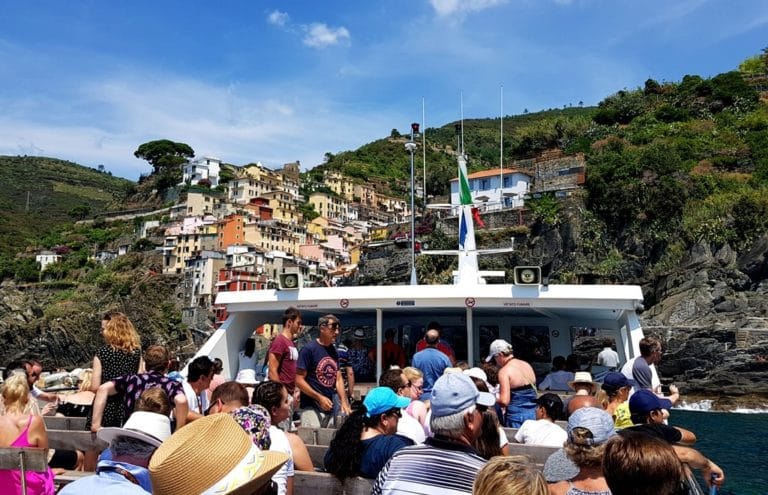Vigo Cruise Port Guide: Top 9 Things to Do on a Cruise Stop
Some links in this post are affiliate links. If you book through them, I may earn a small commission at no extra cost to you. Thanks for supporting my work!
As an Amazon Associate, I earn from qualifying purchases. Read my full disclosure here.
Vigo cruise port sits on Spain’s Atlantic coast in Galicia, a region famous for fresh seafood, Albariño wines, and its historic old town.
The cruise terminal lies in the city center, just a 5–10 minute walk from the Old Town.
I visited Vigo several times on cruise stops, explored the cobbled streets, and took a day trip to taste local wines.
In this Vigo cruise port guide, I share the port overview, tips for getting around and the top 9 things to do when docking in Vigo.
Vigo Cruise Port Overview
Cruise ships dock at Muelle de Transatlánticos quay, just a 5–10 minute walk from Vigo’s Old Town.
The Vigo cruise terminal is a modern building with basic facilities such as souvenirs, toilets, and security screening. Right across from the terminal, you’ll find a tourist information office.
As you step outside, a marina lined with boats opens up in front of you, along with the A Laxe shopping mall, home to several shops (including a popular Mediamarkt), outdoor cafés, and free Wi-Fi.
Follow Rúa Cánovas del Castillo along the waterfront, cross the street, and in just a few minutes you’ll arrive at the Mercado da Pedra on Rúa Teófilo Llorente.
From there, walk uphill and you’ll reach the Old Town and Vigo’s main pedestrian street.
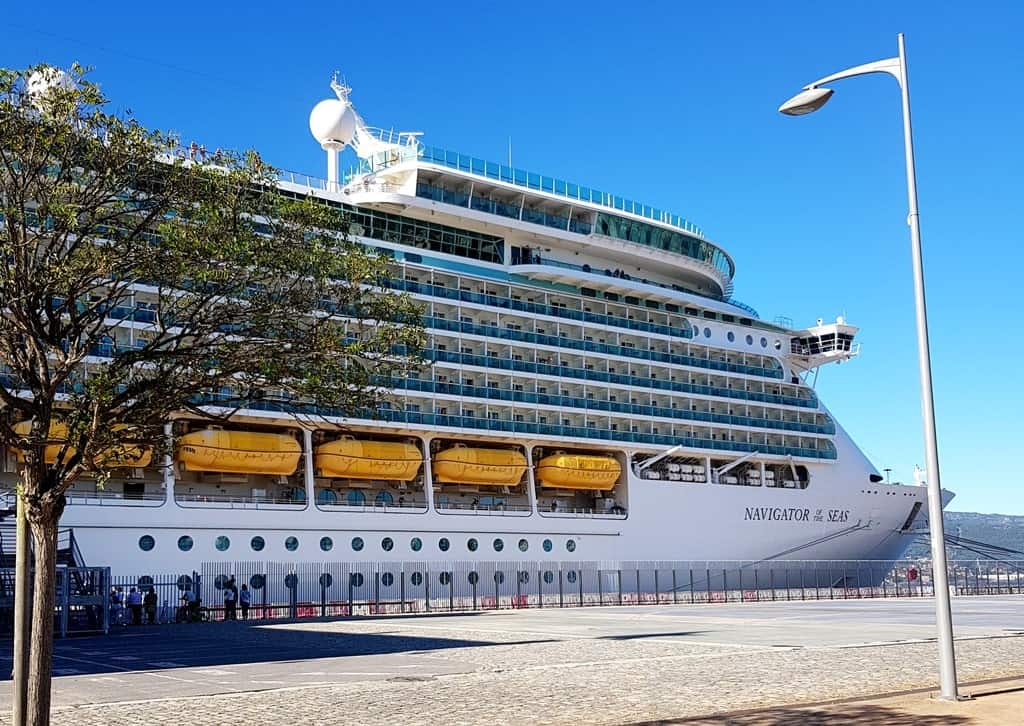
Getting Around Vigo Cruise Port
Vigo cruise terminal is compact, wheelchair-accessible, and very easy to navigate. It only takes a few minutes to exit the building, and there’s a ramp for wheelchair users in addition to the stairs.
🛍️ Walking to the Old Town
The port area is flat, but the Old Town sits on a slight incline. To skip the uphill walk, enter the A Laxe shopping mall in front of the ship and take the elevator to the top floor food court.
From there, a pedestrian bridge leads directly into Mercado da Pedra and the Old Town. This shortcut is especially useful for wheelchair users or anyone with mobility concerns.
Alternatively, a taxi to the Old Town costs less than €10 per vehicle one way.
🚕 Taxis
Taxis wait just outside the port gates. They are metered and often offer tours to Santiago de Compostela. For details and rates, check at the tourist information office right across the terminal.
🚌 Shore Excursions
If you’re joining a cruise ship shore excursion, the tour bus parking is located immediately to the left as you exit the terminal.
Keep in mind that cruise lines often overcharge for excursions, and the groups can be very large.
I usually book with Viator or GetYourGuide, and I’ve always had a great experience with smaller groups, lower prices, and more flexibility compared to ship tours.
👉 Explore top-rated Vigo tours
⛴️ Ferries
The Vigo ferry terminal is just 100 meters from the cruise terminal. From here, you can catch ferries to Cangas and the stunning Cíes Islands. Tickets are sold only at the tourist information office.
🚆 Train Connections
- Vigo-Urzáiz station (2 km / 1.2 miles) offers high-speed trains to Santiago de Compostela, A Coruña, and other Galician cities.
- Vigo-Guixar station (1.5 km / 0.9 miles) also serves regional routes
It’s a 20–30 minute walk or a 5-10 minute taxi ride to either station. You can check timetables at Renfe’s official site
🚌 Hop-on Hop-off Bus
Tourist buses may operate in Vigo depending on the season. For the latest schedules and stops, check with the tourist information office across from the cruise terminal.
✈️ Airports
- Vigo Airport (VGO) is just 15 km (9 miles) away, about a 15-20-minute drive.
- Santiago Airport, the region’s main international hub, is 100 km (62 miles) north, around 1 hour by car.
👉 For extra comfort, you can book a private transfer to or from Vigo cruise port in advance.
Practical Tips for Cruisers
- Currency: Spain uses the euro (€). ATMs and exchange offices are available in the city, and some ships also provide exchange services.
- Wi-Fi: Free Wi-Fi is available in the A Laxe shopping mall, as well as in cafés, restaurants, and designated city hotspots.
- Siesta hours: Most shops and pharmacies (except large department stores) close between 1:30 p.m. and 4:00 p.m. Museums and landmarks are often closed on Mondays.
- Car rentals: If you prefer exploring independently, check Vigo car rental options.
- Staying overnight: If your cruise starts or ends here, explore hotels in Vigo for convenient stays near the port.
Mediterranean Cruise Port Guide
If you’re planning a Mediterranean cruise, my Mediterranean Cruise Port Guide ebook covers 45 ports and is packed with insider tips, shore excursion ideas, and printable checklists.
It’s the perfect resource to help you make the most of every stop!
Top 9 Things to Do in Vigo Cruise Port
1. Mercado da Pedra
One of Vigo’s most authentic spots, Mercado da Pedra is less than a 10-minute walk from the port.
It sits on Rúa Teófilo Llorente, a lively alley lined with seafood restaurants where you can taste freshly shucked oysters and pick up souvenirs.
The street has a slope, which can be tricky for wheelchair users or anyone with mobility issues. A good alternative is to use the A Laxe shopping mall’s top-floor pedestrian bridge, which connects directly to the market.
Yes, it’s touristy and prices run a bit higher than elsewhere in Vigo, but the food is excellent and the atmosphere makes it worth the visit.

2. Casco Vello (Old Town)
Mercado da Pedra is part of Vigo’s Casco Vello, a historic quarter filled with Renaissance buildings, authentic restaurants, tapas bars, wine houses, and small shops.
The Old Town begins right outside Vigo cruise port and includes some of the city’s main landmarks, such as the 19th-century Concatedral – Basílica de Santa María de Vigo.
Its narrow streets, small squares, and lively taverns are all pedestrian-only, so it’s one of the best areas to explore on foot.
The main square is Plaza de la Constitución, while Praza da Igrexa (home to the cathedral), Praza da Pedra, and Praza da Princesa also reflect Vigo’s authentic atmosphere.
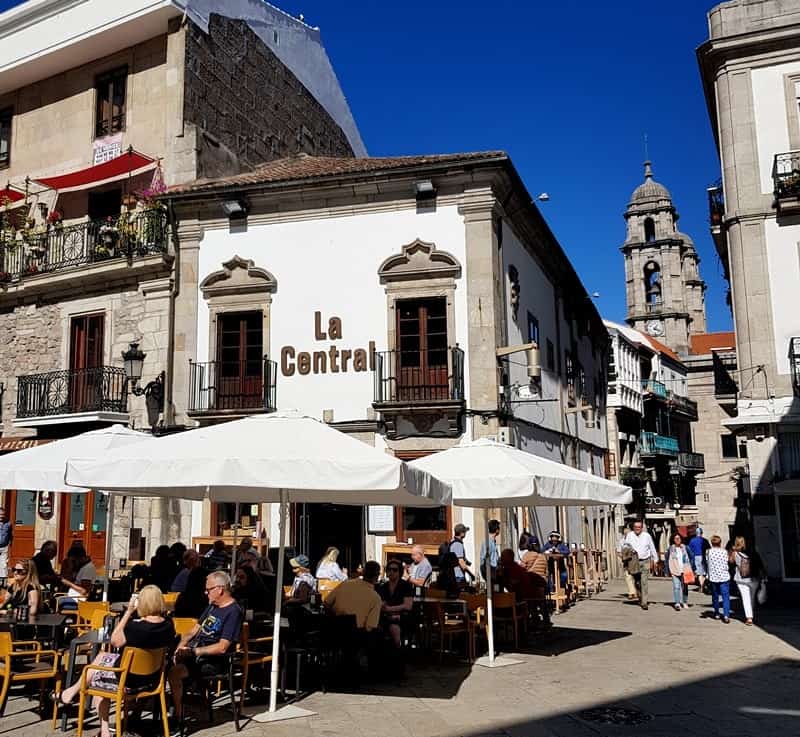
Just a short walk away, you’ll find the Castelo de San Sebastián, the ruins of an old fortress turned into a public park. It’s free to visit and offers great views of the harbor and Vigo Bay. The easiest access is from behind Vigo Town Hall (Concello de Vigo).
Keep in mind that some streets are cobbled and sloped, which may be difficult for visitors with mobility issues.
From the dock, it’s only about a 10-minute walk to reach the Old Town.
3. Rúa do Príncipe (Shopping Street)
From Plaza de la Constitución, walk straight to Praza da Princesa (look for the big Ale-Hop store across the street).
Cross Praza Porta do Sol and you’ll arrive at Rúa do Príncipe, Vigo’s main pedestrian shopping street.
Here you’ll find banks, pharmacies, clothing and cosmetics stores, jewelry shops, and both designer and local boutiques.
Side streets are lined with cafés and small restaurants, perfect for a snack or meal at reasonable prices.
4. Castelo do Castro
For the best panoramic views of Vigo, head to Castelo do Castro, a medieval fortress turned hilltop park with prehistoric ruins dating back to the Iron Age.
Built in 1665 during the Portuguese Restoration War to defend against the British Navy, today it’s a peaceful green space with gardens, fountains, and sweeping city views.
The fortress is about 2 km (1.2 miles) from the port, roughly a 30-minute walk. Be prepared for a climb, either up stairs or curving uphill paths.
Some of the surrounding streets have escalators to make the ascent easier, but the walk down must be on foot.
At the top, there are no vendors or toilets, so bring water and plan ahead. For fresh air, exercise, and unforgettable views, this is one of Vigo’s highlights.
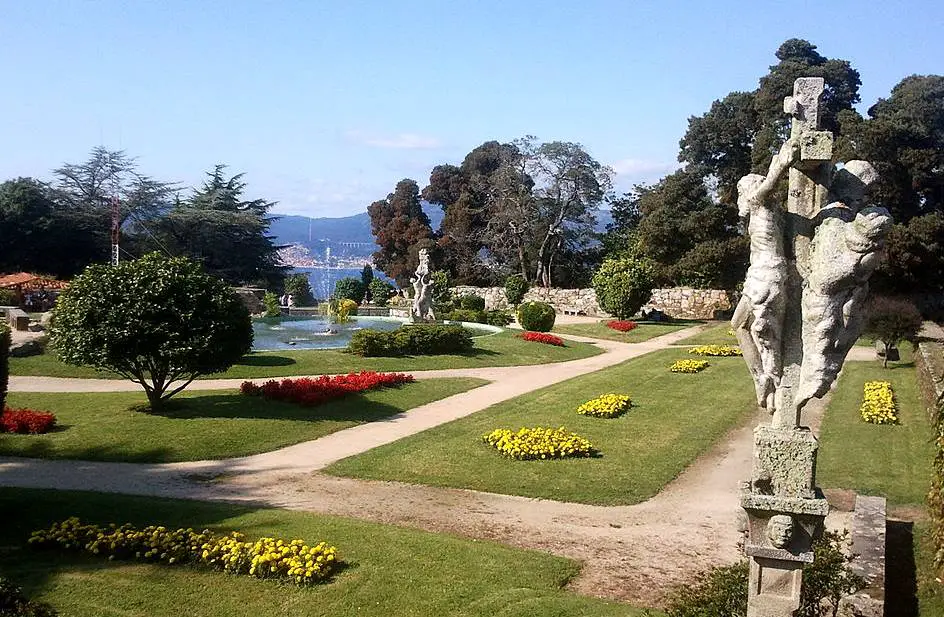
5. Praia de Samil (Samil Beach)
Praia de Samil is Vigo’s main beach and one of the most beautiful in Galicia.
Located about 7.5 km (4.6 miles) southwest of the port (a 15-minute drive), it’s a perfect spot for a beach day.
The beach stretches for 1.7 km (5,600 ft) of soft white sand, backed by a lively promenade with sports facilities, pools, parks, parking, cafés, and restaurants.
It’s a great choice for families, couples, or anyone looking to relax by the sea. The best way to reach it is by taxi, as public transport is not very frequent.
6. Wine Tasting at Bodegas Granbazán
Galicia is famous not only for its seafood but also for its wines.
The Rías Baixas region, on the southwest coast of Galicia, is world-renowned for Albariño, a crisp white grape grown here and in northwest Portugal.
If you love wine, consider joining a winery tour. I had a chance to visit Bodegas Granbazán, about 53 km (33 miles) north of Vigo, a 45-minute drive, and it was an unforgettable experience. The estate is set in the heart of Rías Baixas, surrounded by rolling green hills and coastal scenery.
The visit typically includes a vineyard and winery tour followed by a tasting of Albariño wines, which truly live up to their reputation.
👉 Explore Vigo wine-tasting tours
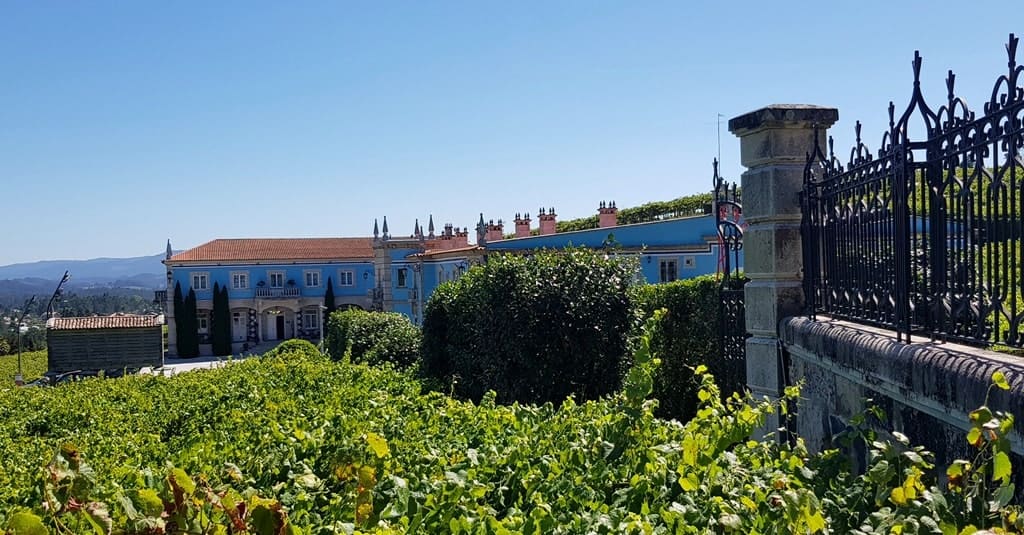
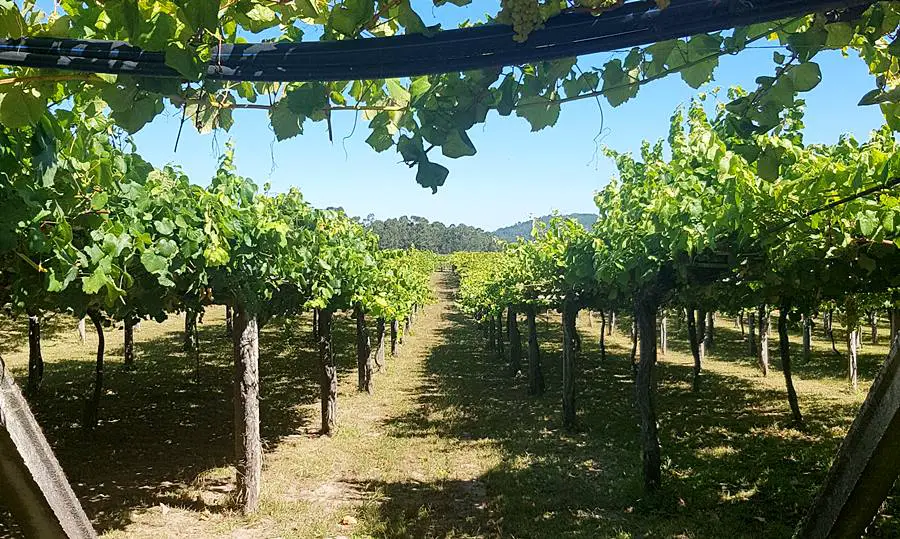
7. Day Trip to Pontevedra
Pontevedra is a charming city about 30 km (18.6 miles) north of Vigo, just a 30-minute drive from the pier.
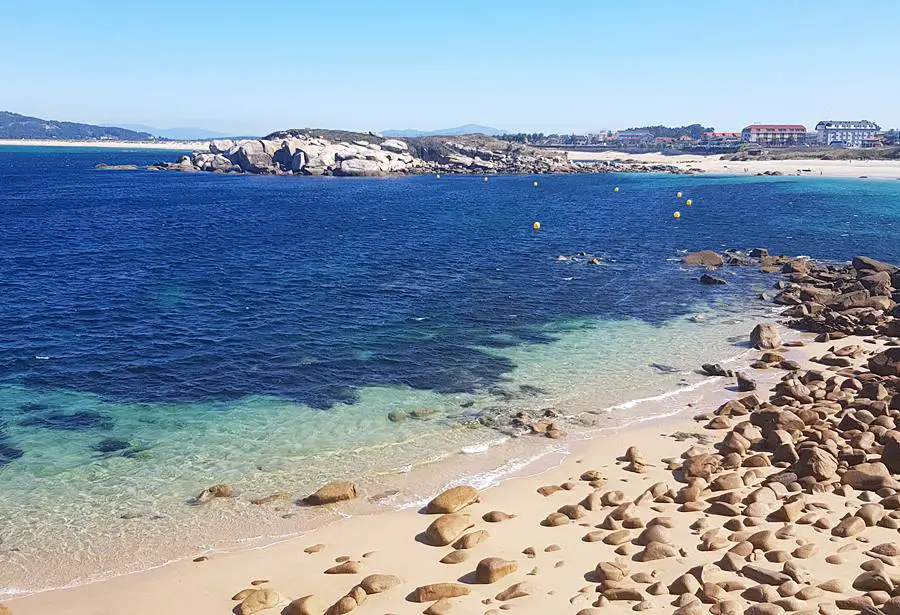
Surrounded by green hills and set on the Ría de Pontevedra estuary, it’s best known for its well-preserved Old Town and the Baroque Church of the Pilgrim Virgin, an 18th-century scallop-shaped chapel dedicated to the Virgin who, according to tradition, guided pilgrims to Santiago de Compostela.
Other highlights include the Gothic Basilica of Saint Mary Major, the 14th-century ruins of St. Dominic’s church (today part of the Pontevedra Museum), and the Convent and Church of San Francisco.
👉 Check out Pontevedra tours from Vigo
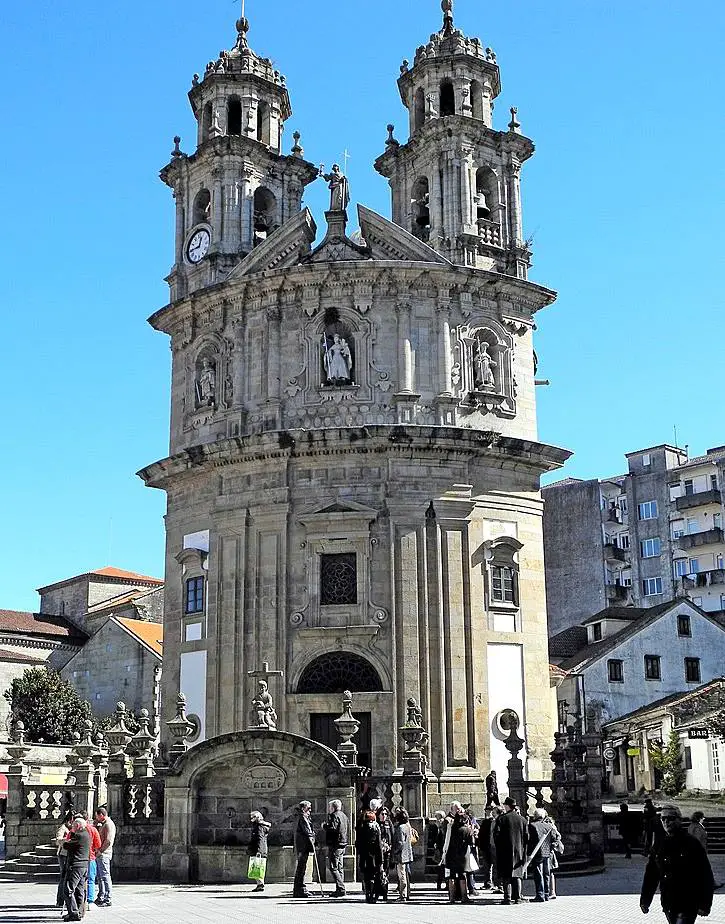
8. Santiago de Compostela
About 90 km (56 miles) north of Vigo, around a 1-hour drive, lies Santiago de Compostela, Galicia’s capital and one of the world’s most famous pilgrimage sites.
In medieval times, it ranked as the third most important Christian site after Rome and Jerusalem, and today it’s the final stop of the Camino de Santiago.
The city’s centerpiece is the Cathedral of Santiago de Compostela, consecrated in 1211 and believed to house the relics of St. James the Apostle.
The cathedral dominates Plaza del Obradoiro, a UNESCO-listed square also home to the 18th-century Town Hall (Pazo de Raxoi) and the Hospital Real de Santiago, now a historic 5-star hotel.
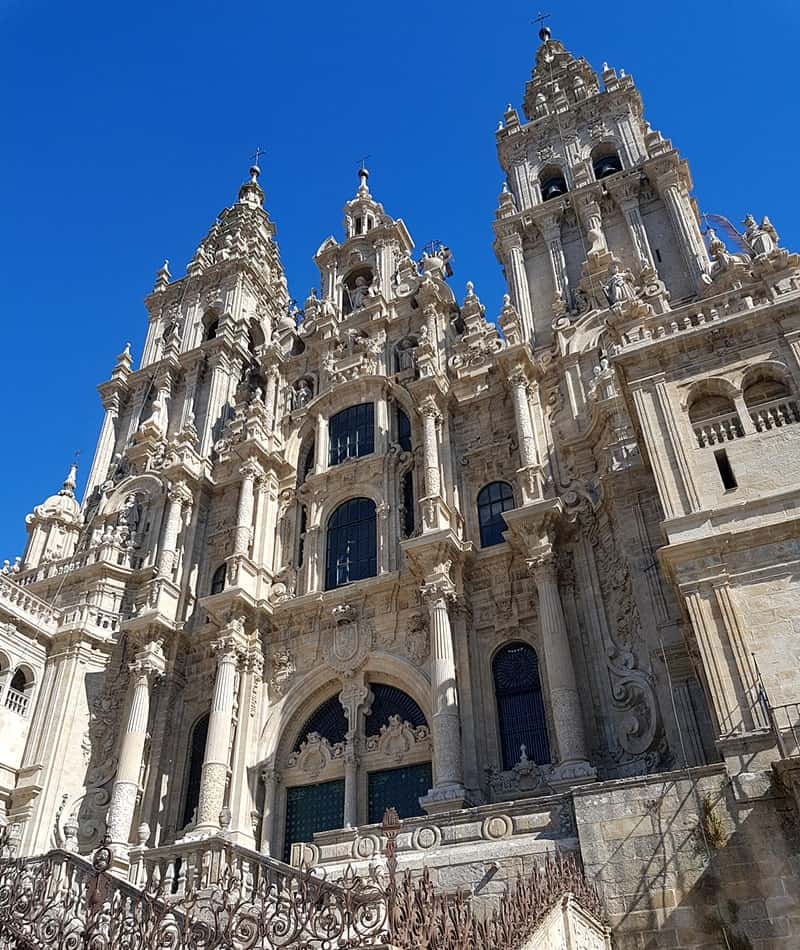
Santiago’s Old Town is a maze of cobblestone streets lined with cafés, tapas bars, and souvenir shops, along with charming squares like Praza da Quintana and Praza da Inmaculada.
Don’t miss the Monastery of San Martiño Pinario, Spain’s second-largest, and Alameda Park, known for its gardens and historic monuments.
If you’re arriving by bus tour, note that parking is about a 15-minute walk from the Old Town. The route includes inclines and uneven surfaces, so it may be challenging for wheelchair users or those with mobility issues.
The Old Town itself is pedestrian-only, so expect some walking.
9. Day Trip to Baiona
About 36 km (22 miles) southwest of Vigo, a 35-minute drive lies Baiona, a historic coastal town with a medieval old town and a scenic marina.
Baiona is best known as the port where La Pinta, one of Columbus’s ships, returned on March 1, 1493, bringing Europe the first news of the discovery of America.
A replica of the ship is on display, and every year the town celebrates the event with the lively Festa da Arribada.
Other highlights include the Monterreal Fortress, overlooking the Cíes Islands, now home to the elegant Parador de Baiona hotel, and the 18th-century Santa María Collegiate Church.
👉 Explore tours to Baiona from Vigo
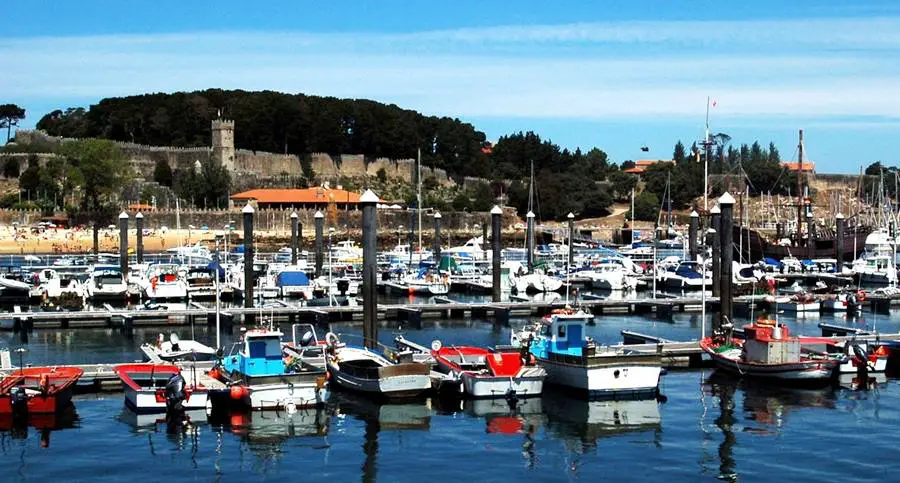
Vigo Cruise Port FAQ
❓ Is Vigo cruise port within walking distance of the city?
Yes. The Vigo cruise terminal is located in the city center, just a 5–10 minute walk from the Old Town and main attractions.
❓ How do you get from Vigo port to Santiago de Compostela?
Santiago is about 90 km (56 miles) north of Vigo, roughly a 1-hour drive. You can visit on a shore excursion, private transfer, or by train from Vigo (check schedules at Renfe)
❓ Are taxis available at Vigo cruise port?
Yes. Metered taxis wait outside the port gates. They can take you around Vigo or on longer trips, including tours to Santiago de Compostela.
❓ Is Vigo cruise port accessible for wheelchair users?
The terminal is wheelchair-friendly, with ramps and flat access. The Old Town has cobblestone streets and inclines, but you can use the A Laxe mall’s elevator and pedestrian bridge to avoid the uphill walk.
❓ What is the best way to reach Samil Beach from the port?
The easiest option is a taxi (about 15 minutes). Public transport is available but less frequent.
❓ Is there free Wi-Fi at Vigo port?
Yes. You’ll find free Wi-Fi in the A Laxe shopping mall opposite the terminal and in many cafés and restaurants around town.
Helpful Resources for Vigo Cruise Port
🌍 Useful Websites
- Find the Port of Vigo on Google Maps
- Vigo Cruise Ship Schedule
- Vigo Port Authority
- Vigo Tourism Office
- Local Weather Forecast
⚓ Other Ports Included on Itineraries
The port of Vigo is a frequent stop on Atlantic and Northern Europe cruises. Many itineraries also feature:
- Lisbon – historic neighborhoods and iconic trams
- La Coruña – Tower of Hercules & seafront promenades
- Southampton – a common homeport for Vigo cruises
- Bilbao – Guggenheim Museum & Basque culture
- Le Havre – gateway to Paris and Normandy
- Zeebrugge (Bruges) – canals & medieval architecture
- Cádiz – gateway to Seville
- Málaga – Costa del Sol hub
- Ibiza – UNESCO Old Town & beaches
You may also like our cruise port guides to the Mediterranean, Caribbean, Northern Europe, USA & Canada, Middle East, Australia & New Zealand
Adventour Begins contains affiliate links. If you make a purchase through these links, we may earn a commission at no additional cost to you. For more details, please see our Disclosure Policy





